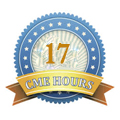
Vicki Cameron
Strathclyde University, UK
Title: Barefoot and shod walking in virtual reality environment with Oxford foot model
Biography
Biography: Vicki Cameron
Abstract
Introduction and Objectives: The Oxford foot model (OFM) was developed to get accurate measurement of foot movement during gait as the bone pin method is not practical for most clinicalrnsituations. It has been validated in adults and children. However, since barefoot walking on a treadmill is not recommended and there is a question over whether the OFM can be usefully applied in facilities such as the Motek CAREN (Computer Assisted Rehabilitation Environment - motekmedical.com). Consequently, there is an interest to see if applying markers to shoes can give useful results when measuring human walking on treadmills. This study looks at the differences in measurements using the OFM between walking over-ground (barefoot and with shoes) and on a treadmill (with shoes).rnrnMethods: Nine boys (mean age 13.5±0.5 years, height 1.59±0.09 m, mass 47.8±8.3 kg) were recruited. Retro-reflective markers were attached bilaterally following the Plug-in-Gait lower limb and OFM models. The over-ground (barefoot and with shoes) trials were recorded in a standard gait laboratory. Barefoot trials were performed first to minimise the need to reattach markers. The treadmill walking trials were recorded in the CAREN immediately after the over-ground trials. The treadmill speed was set to match the speed of over-ground walking in the gait laboratory. Gait events were determined from force plate contacts. All the boys wore light indoor training shoes. Data was captured using Vicon Nexus 1.8.5 and processed using Plug in Gait and OFM models in Nexus 2.1.rnrnResults: There were no difference in ankle or knee kinematics between over-ground (barefoot and with shoes) and on a treadmill (with shoes). Although forefoot-hindfoot angles were comparable to the literature in the barefoot condition, this was not the case with shoes. Barefoot, there was a steady dorsiflexing motion throughout stance until push off which was signified by a rapid plantar-flexing motion. With shoes on, the same model segments show rapid dorsiflexion, then plantar flexion during early stance followed by neutral position held until push-off.rnrnConclusion: Reinschmidt and colleagues (1997) reported that the shape of the calcaneal motion curves was similar for shoe mounted markers and bone markers, but that the shoe-mounted markers overestimated joint angles. In this study, the shape of the curves was quite different. This paper will discuss the practicalities and limitations of this technique, and where it may be usefully applied.rn

